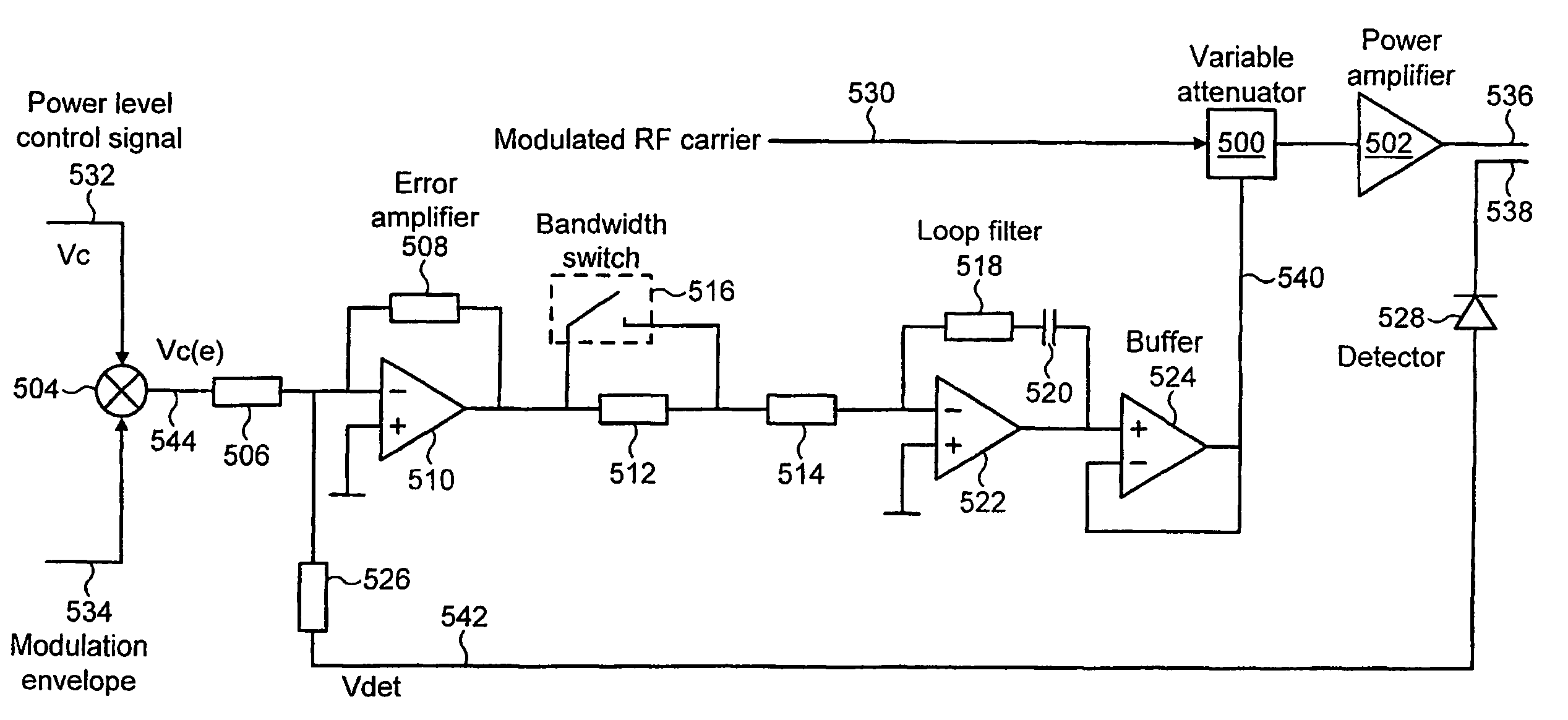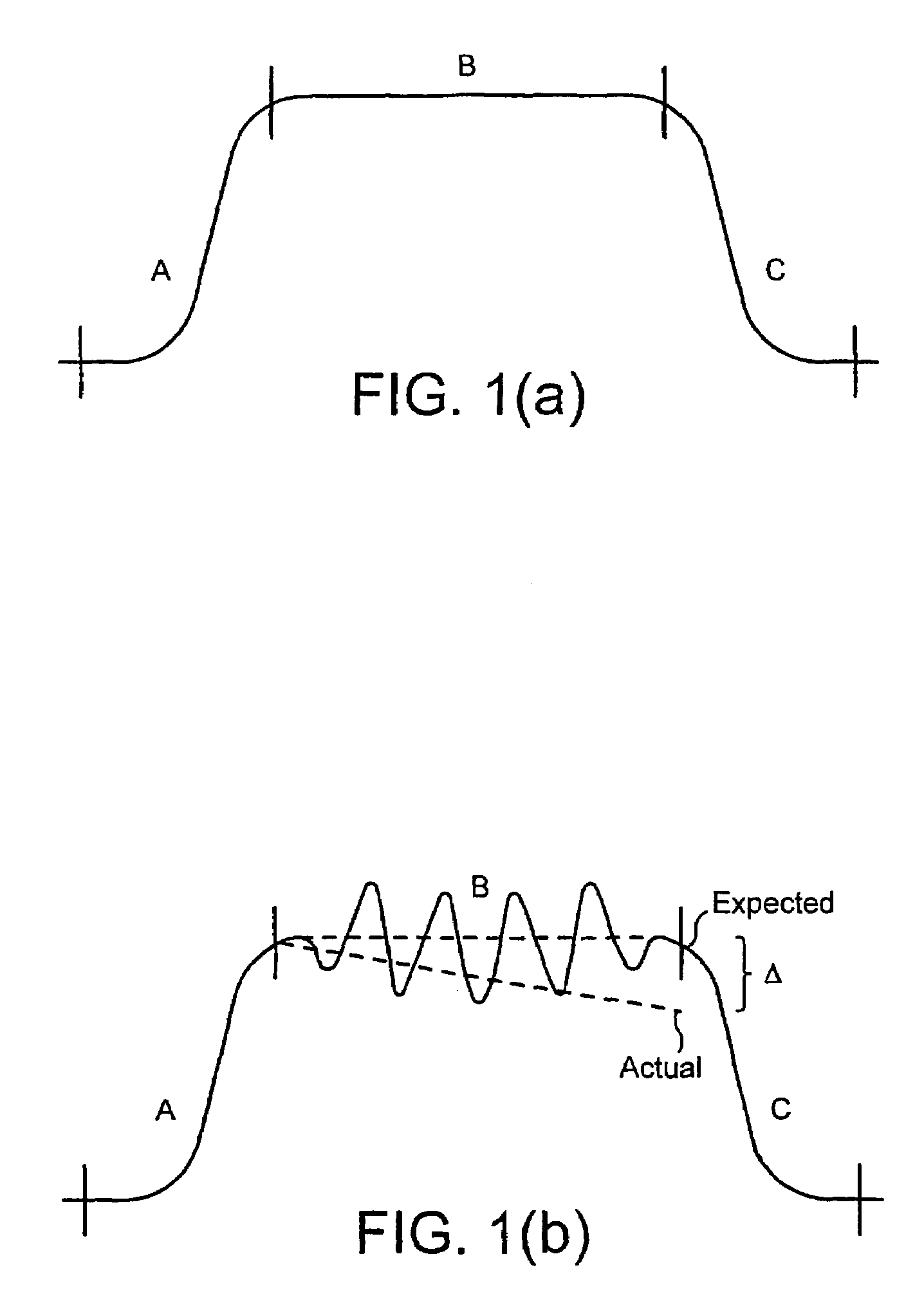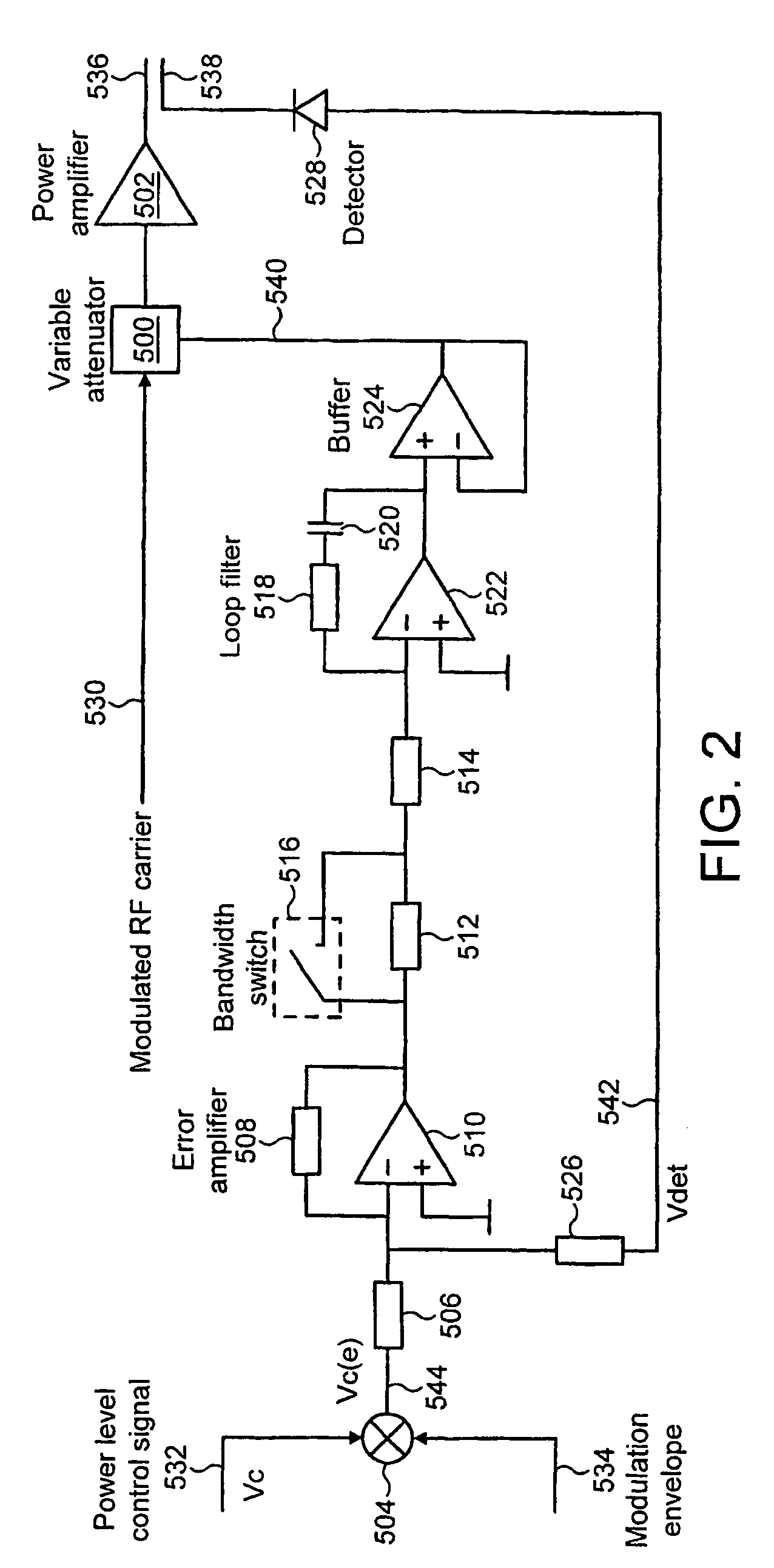Power control for non-constant envelope modulation
a power control and non-constant envelope technology, applied in power management, transmission monitoring, wireless communication, etc., can solve the problems of inability to correct the control loop, transients at the end of the burst, and inability to achieve the correctness of the control loop, so as to reduce the bandwidth of the control system
- Summary
- Abstract
- Description
- Claims
- Application Information
AI Technical Summary
Benefits of technology
Problems solved by technology
Method used
Image
Examples
Embodiment Construction
[0021]A preferred embodiment of power control system in accordance with the present invention is shown in FIG. 2. The power control system includes a variable attenuator 500, a power amplifier 502, a detector / lineariser comprising a diode 528, a comparator formed by resistors 506 and 526, a mixer 504, an error amplifier comprising operational amplifier 510 and resistor 508, a bandwidth switch comprising resistor 512 and switch 516, a loop filter comprising operational amplifier 522, resistor 518 and capacitor 520, and a buffer 524.
[0022]The variable attenuator 500 receives as a first input on line 530 a modulated RF carrier signal to be transmitted. As will be described in further detail hereinbelow the variable attenuator receives as a second input an attenuator control signal on line 540. The modulated RF carrier signal, after attenuation in the variable attenuator 500, is applied to the power amplifier 502. An amplified output signal is then generated on line 536.
[0023]The input ...
PUM
 Login to View More
Login to View More Abstract
Description
Claims
Application Information
 Login to View More
Login to View More - R&D
- Intellectual Property
- Life Sciences
- Materials
- Tech Scout
- Unparalleled Data Quality
- Higher Quality Content
- 60% Fewer Hallucinations
Browse by: Latest US Patents, China's latest patents, Technical Efficacy Thesaurus, Application Domain, Technology Topic, Popular Technical Reports.
© 2025 PatSnap. All rights reserved.Legal|Privacy policy|Modern Slavery Act Transparency Statement|Sitemap|About US| Contact US: help@patsnap.com



